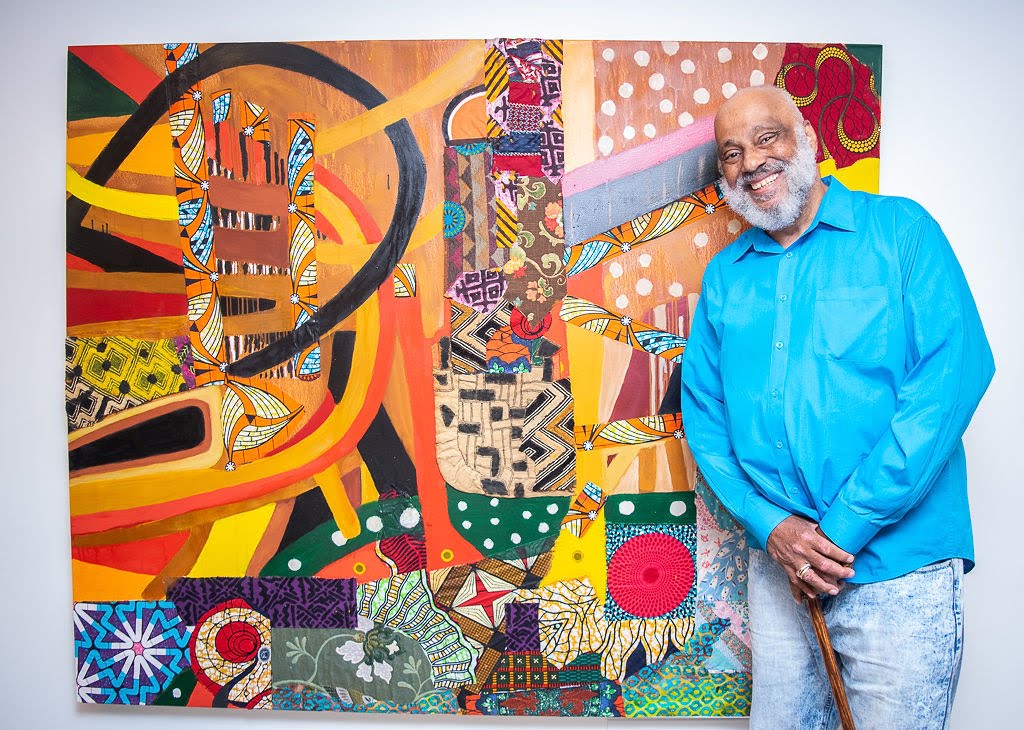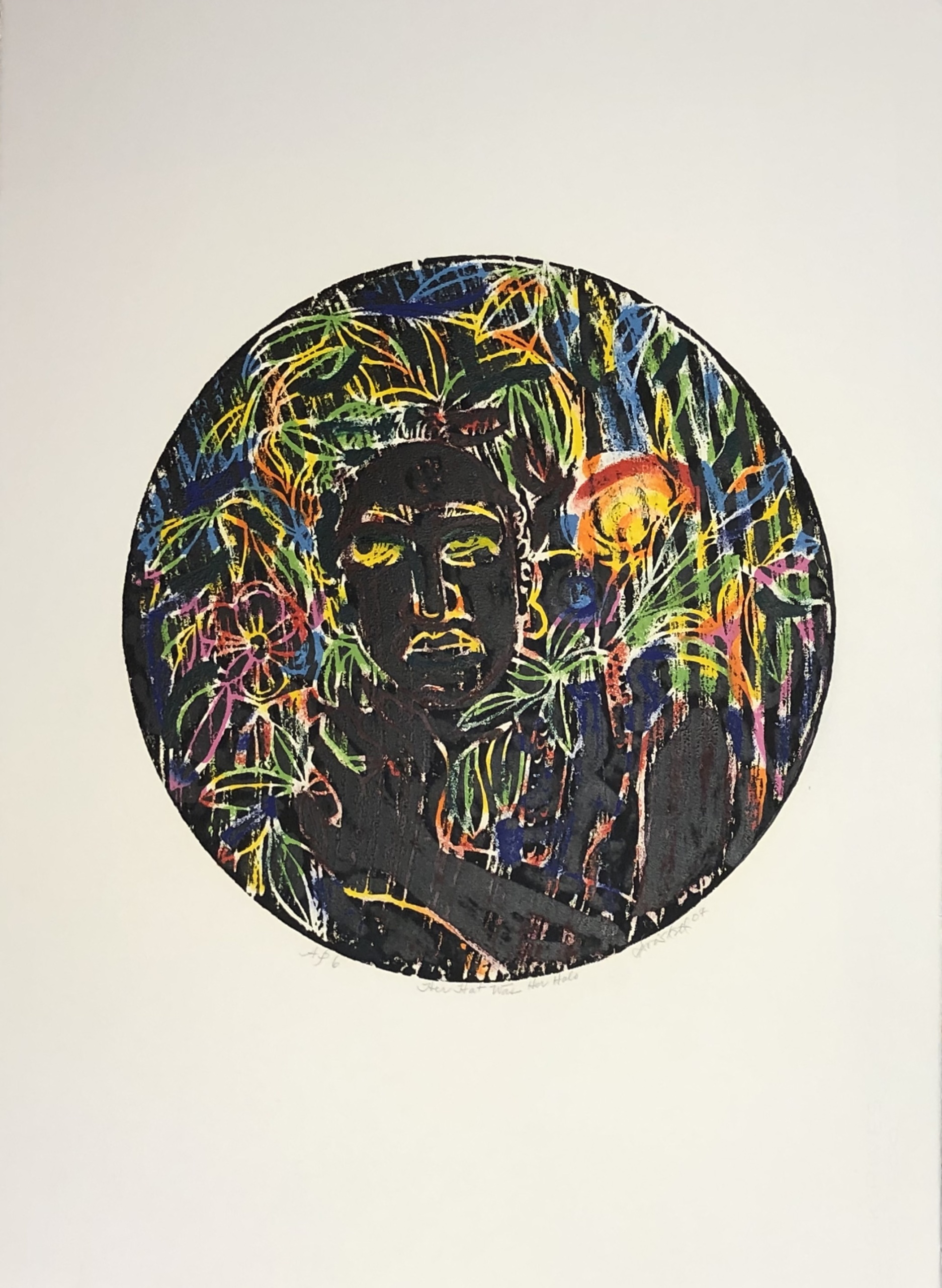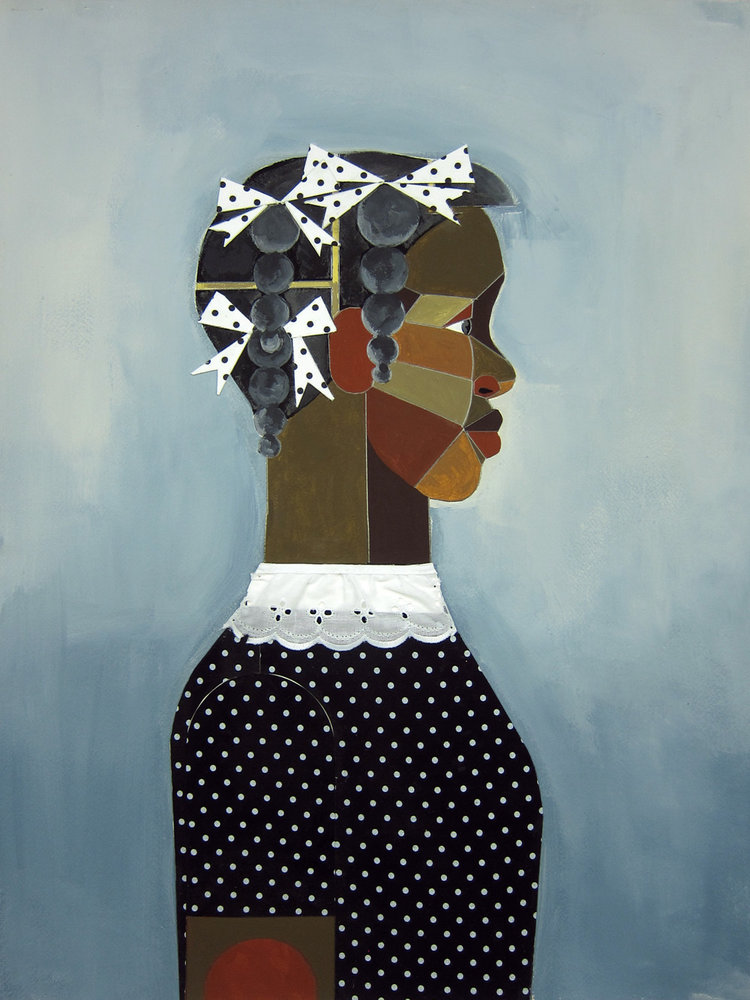
For 25 years, the Simmons family has nurtured Black visual art against the odds. Nonprofit Rush Arts, founded by visual artist Danny Simmons, Def Jam Recordings co-founder Russell Simmons, and Run-DMC rapper Joseph “Rev. Run” Simmons in New York and since opened a gallery in Philadelphia, has dedicated its efforts to providing Black youth with arts education and opportunities for emerging artists and curators since 1995. Danny Simmons gifted me some of his time as he was preparing for Art For Life 25, the foundation’s digital celebration and fundraiser, which, on Saturday, will honor artist Derrick Adams, photographer Dawoud Bey, investor Reginald M Browne, and scholar Dr. Deborah Willis for their support of the arts, career achievements and overall commitment to the community.
Mia Harrison: How was Rush Arts founded?
Danny Simmons: Well, it started with me being an artist. I was looking for a place in SoHo where galleries might want to show my work and wasn’t able to find any that were interested in my work or had any interest in African American artists whatsoever. So I said, ‘Let me create a space that would allow African American artists to show their work.’ At first I started renting out space and eventually when that grew a little tired I went to Russell and Run and said, ‘Listen, we got to start an art gallery.’
At the time, the New York City mayor was taking all the money out of the arts and so Russell said, ‘Yeah, let's do this.’ We had a big fundraiser and Run-DMC performed and we raised $250,000. And so, in 1995, Rush Arts started.

MH: The Rush Arts journey seems to stem from responding to the climate for Black artists and youth at the time. How did you go about creating your arts spaces? Did you have models to look to? Did you do research?
DS: I didn’t do any research. You buy a space, you put art on the wall, you invite people and you buy a bottle of wine. There were a few Black galleries, small galleries in Brooklyn that were showing our work. But there was nothing really in Manhattan. Instead of looking at models, we looked at needs and thought of what to create. We knew that we needed space in a place where people were respected. We picked Chelsea. We realized the kids weren't getting art education. We had all these Black artists coming in and out and thought, ‘Why don't we get them to teach these kids a little about art?’
MH: Rush Arts has supported the careers of artists like Simone Leigh, Kehinde Wiley, Wangechi Mutu and many more who have gone on to become leading cultural makers. What about these artists early on encouraged Rush Arts to collaborate with them?
DS: I have to give credit to my cousin, Derrick Adams, who is from their generation. Derrick was one of our curatorial directors. So these [artists] were friends of his, people he went to college with, people he knew from just being in the same generation. Derek reached out to people and that's how that happened. He created shows from young people who deserved the opportunity.

MH: What roles do you think arts education and art spaces play in fostering the growth of the Black community and other communities of color? Maybe you could speak a bit about Rush Arts’s gallery in the Logan neighborhood of North Philadelphia.
DS: I've always thought that art is healing; it's a reflection of the people in the community. It starts to begin to heal the wounds that are in our community, it is an empowering thing, especially for children. When kids see reflections of themselves, it encourages them to use their creativity to express themselves. In Logan, the community response is one of pride in seeing an art gallery settle in a neighborhood where there never was one. Seeing people coming in to see the artwork is a very empowering thing. Even more so than in an art district, it’s very empowering to have it right in the middle of a Black neighborhood.
MH: What are the next steps and goals for Rush Arts?
DS: We are thinking about ways that we could activate that one little gallery in Logan to energize that community. I purposely chose a community that didn’t have any arts organizations so we could make a difference. Our job is not only to show art but to make a difference to that community.



